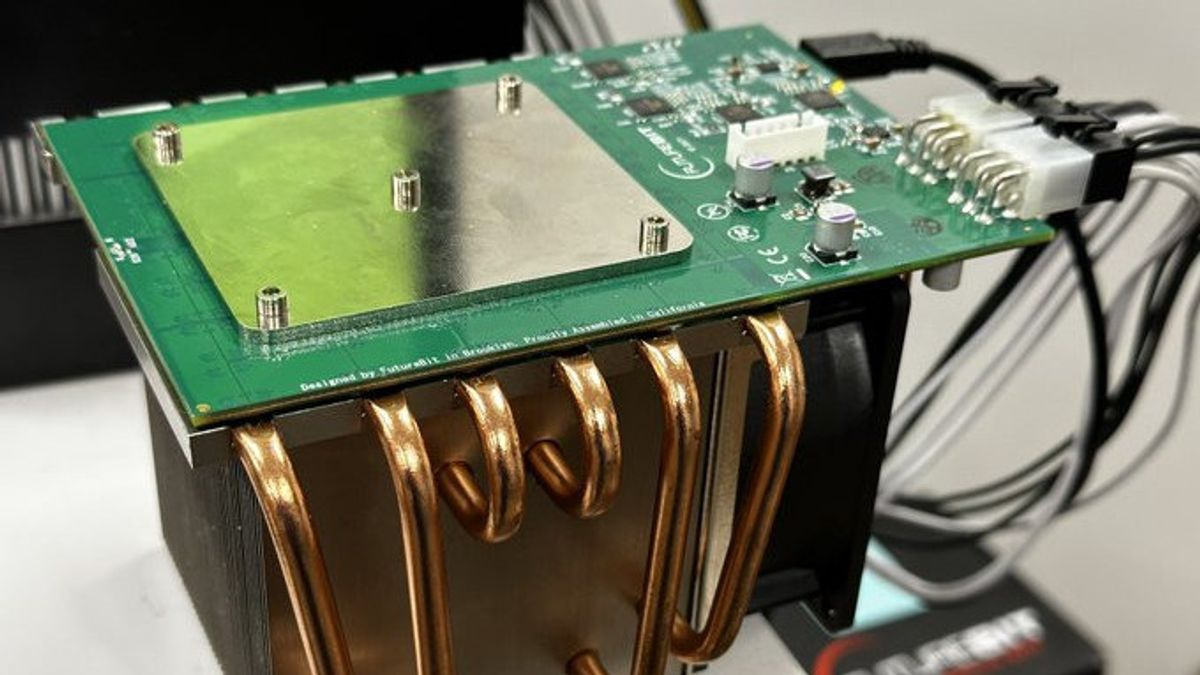JAKARTA - Bitcoin network hashrate has returned to normal levels again, days after freezing temperatures across the United States put a strain on the country's power grid, eventually causing a temporary drop in hashrate due to a power shift.
In the days leading up to Christmas, bone-chilling temperatures ravaged across the United States, forcing millions of people without power and claiming at least 28 lives.
According to reports, Bitcoin miners in Texas, which account for a large portion of the country's hashrate, are voluntarily curtailing Bitcoin mining operations to restore power to the network, so residents can heat their homes.
The disruption appears to have hurt Bitcoin's hashrate, which usually hovers around 225-300 Exahashes per second (EH/s). It fell to 170.60 EH/s on December 25.
But on December 26, the hashrate had returned to 241.29 EH/s, according to data from mining calculator CoinWarz hashrate.
Bitcoin hashrate is calculated by measuring the number of hashes generated by Bitcoin miners trying to crack the next block. This is considered a key metric in assessing how secure the Bitcoin network is.
The recent events sparked a controversial statement from FutureBit founder John Stefanop, who stated that the drop in hashrate was due to a number of “highly concentrated mines” in Texas shutting down at the same time.
“I know, doesn't change the fact that some big mines in Texas impacted the entire network by up to 33%...everyone's transactions are now confirmed 30% slower because the hashrate isn't decentralized enough,” Stefanop said, as quoted by Cointelegraph.
“If hashrate was distributed evenly around the world by 10 million small miners instead of a few dozen large mines, these events would not even be registered on the network,” added Stefanop.
However, Bitcoin bull Dan Held disputed Stefanop's opinion of the event, arguing that weather patterns do not imply central ownership or control.
According to the Cambridge Bitcoin Electricity Consumption Index, the United States accounts for 37.84% of the average monthly hashrate share. The top four states in the country for Bitcoin mining include New York, Kentucky, Georgia, and Texas, which have all experienced power outages due to winter storms.
However, Dennis Porter, CEO of Bitcoin mining advocacy group Satoshi Action Fund noted to his 127,400 Twitter followers on December 25 that while bad weather, particularly in Texas, caused 30% of the Bitcoin hashrate in the United States to go offline, the network "continues to work flawlessly."
Cheap labor and favorable mining regulations in Texas have led to a Bitcoin mining boom in Texas in recent months, which now plays host to some of the world's largest Bitcoin mining companies.
Among Riot Blockchain, Argo, Bitdeer, Argo, Compute North, Genesis Digital Assets, and Core Scientific — which recently received a $37.4 million bankruptcy loan to stay afloat.
But recent weather events have only added to the list of headaches for Bitcoin mining companies.
According to the latest data, Bear market has infected Bitcoin mining companies until they require USD 4 billion (IDR 62.5 trillion) in debt.
Many well-known US-based mining companies have filed for bankruptcy in recent months. While many other companies are approaching a nearly insurmountable debt-to-equity ratio that requires immediate restructuring.
The tragic weather events have so far not affected the price of Bitcoin (BTC), which is currently priced at 16.826 US dollars — down only 0.27 over the past 24 hours.
The English, Chinese, Japanese, Arabic, and French versions are automatically generated by the AI. So there may still be inaccuracies in translating, please always see Indonesian as our main language. (system supported by DigitalSiber.id)











